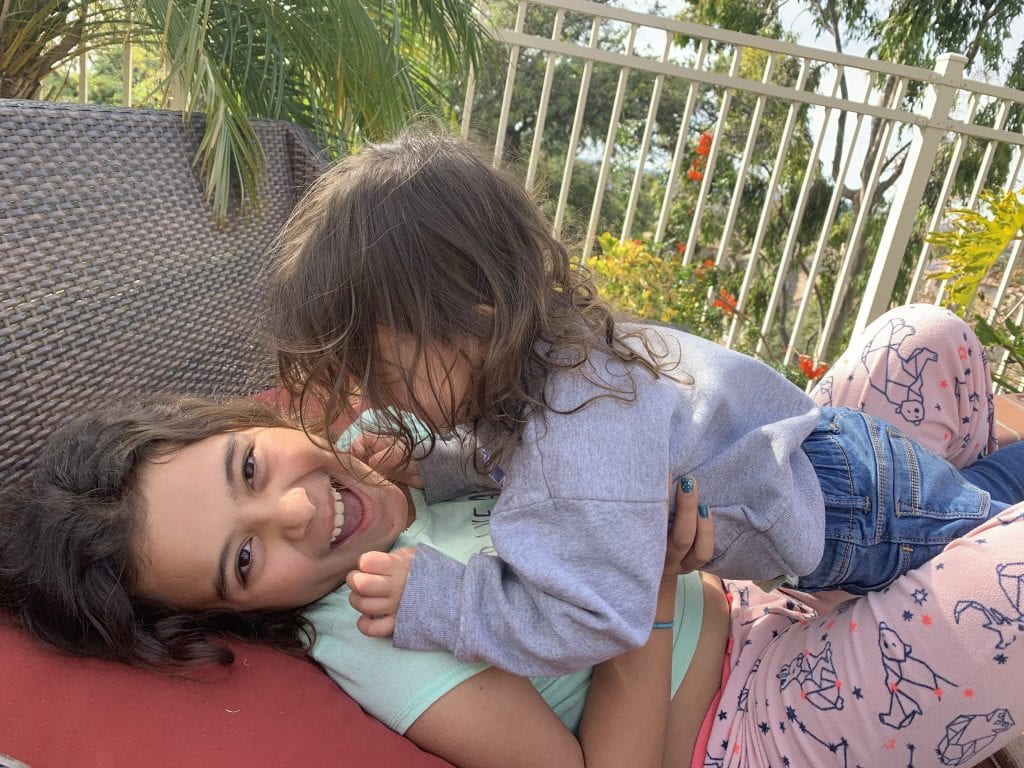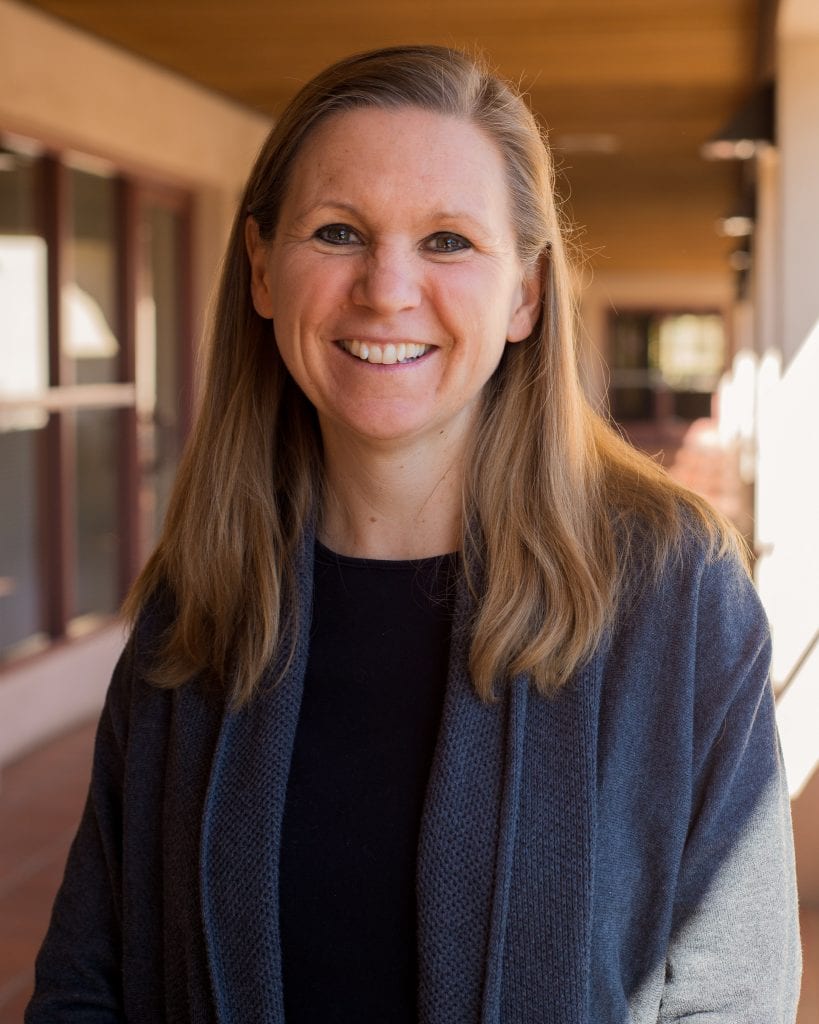
Then 10-year-old Adeela Gokal was 5, most people couldn’t understand her. “She had difficulty finding the right words,” says Alison Gokal, Adeela’s mom. When referencing objects, Adeela might say, “The thing with the thing.”
Her parents figured it was something she would grow out of. And when Adeela struggled to read in kindergarten, her teacher thought the same. By the time Adeela was in third grade, a homework assignment designed to take 20 minutes was a three-hour process that Gokal says was filled with “mental and emotional breakdowns.”
Gokal says Adeela was labeled as lazy and started to suffer from anxiety and depression.
One day in 2014, at the family’s Rancho Santa Margarita home, Adeela’s father, Abbas Gokal, asked her a question that changed everything: “What do you see when you’re looking at letters?”
Adeela answered, “Well, they dance and then sometimes they run off the page.”
The Gokals pushed Adeela’s school to test her for a learning disorder. The results revealed that she has severe dyslexia. Adeela is one of millions of students in the U.S. with a language-based learning difference, also known as a language-based learning disorder or LBLD. A report issued in 2017 by the National Center for Learning Disabilities found that one in five children in the U.S. has a learning or attention issue.
Undetected, an LBLD can lead to depression, a dislike of school and, eventually, dropping out. With a diagnosis, however, students can receive the tools, skills and support they need to navigate the way their brains process language.
What is a Language-Based Learning Difference?
An LBLD is anything that interferes with a child’s ability to communicate or to understand communication, according to Jenny Tucker Mottes, principal of the Frostig School, a Pasadena-based school that caters to students with learning differences.
LBLDs are neurological processing differences that typically affect listening, speaking, reading, writing and math calculating skills. LBLDs include verbal- and non-verbal based differences. Common LBLDs include:
- Auditory Processing Disorder (APD), where students have difficulty understanding and processing differences between sounds in words;
- Dyscalculia, where students have difficulty understanding arithmetic and mathematical calculations;
- Dysgraphia, where students have difficulty writing or exercising other fine-motor skills; and
- Dyslexia, which causes students to experience difficulty interpreting letters and words.
It’s important to note that LBLDs have nothing to do with intelligence. In fact, many children with LBLDs have normal to above-average intelligence. “Their brains just work differently. In fact, these brains that work differently are often pretty brilliant,” says Claudia Koochek, head of school at Encino’s Westmark School, which serves students with distinct learning styles.
Recognizing the Signs

Most often, LBLDs go undetected until a child reaches school age. “These differences pop up so often in school settings because so much of school is communicating either orally or through reading and writing,” says Tucker Mottes. “That’s where we really start to see the challenges come up.”
But parents can detect the signs earlier if they know what to look for. Speech-language pathologist Tina Babajanians, who has worked with students in the Montebello Unified School District for the past decade, encourages parents to pay special attention to whether their child meets certain developmental milestones.
Babajanians says that a baby should be attentive to sounds in the environment at 6 months of age, begin to communicate by babbling and cooing at 9 months, and be saying their first words and pointing to things by age 1. “By 15 months, you want to hear more clear first words,” she says.
Signs in older children ages 6-10 include not being able to follow two-step directions at home, follow conversations or retell a story in order of events. An inability to recognize letters, read and write are also common signs, as is the inability to tell time or stay organized, Mottes says.
Anne Webber noticed some of these signs in her 12-year-old son, Matt, when he was a toddler. At 18 months, his oral skills hadn’t developed. As a former educator, Webber knew the importance of having Matt tested and addressing his language delay with therapy, but she didn’t know that speech delay is often a sign of an LBLD. As a result, Matt wasn’t diagnosed with dyslexia until he was in the second grade.
Looking back, Webber says, other signs of an LBLD were always present. “When he was in preschool, he started exhibiting a lot of the signs, like not being able to identify rhyming words and having a hard time recognizing letters of the alphabet,” she says. Also, Matt’s father has dyslexia, and parents with an LBLD often have children with one.
Today, Matt is thriving at the Prentice School in North Tustin. Thanks to the school’s multisensory approach to learning and its small class sizes, he is a rising leader among his peers. He is an example of how kids with LBLDs can learn to thrive with their differences, if properly supported. Parents just need to take a few key steps.
Trust Your Gut
Many parents delay digging in and rooting out the cause of their child’s struggles. “A lot of parents intuitively sense there’s something going on, but they don’t want to take their child to a developmental pediatrician or a local regional center because they’re afraid of a diagnosis,” says Babajanians.
Parents also duck testing in the hope that this, too, shall pass. “I think one of the things that I hear the most often is, ‘They’ll grow out of it,’” says Tucker Mottes, “thinking that it’s more of a developmental phase rather than an actual challenge that needs specific strategies.”
But earlier diagnoses would have spared Adeela, Matt and their parents years of struggle and frustration. Webber, who is also on the board of Dyslexia Voice, an advocacy group for kids with dyslexia, advises fellow parents to trust their instincts. “If you feel something is not right, then you should really listen to that feeling and go with it,” she says.
Pursue Testing

Webber advocates early testing when parents suspect a problem. “Children need to be screened early, like around age 5,” she says. With accurate testing and the appropriate resources, most kids can catch up by the third grade.
Mottes says early detection also helps keep students with LBLDs from falling behind. “Kids who are being diagnosed in third or fourth grade are ‘playing catch up’ rather than having early intervention that could be addressed before they’re behind,” she says.
If you have an undiagnosed fifth grader, however, don’t fret. Students who are assessed later in their academic journeys can still rebound. “The greatest thing we did [for Adeela] was actually hiring an outside consultant and an outside educational psychologist to do a complete evaluation of her,” says Gokal.
Evaluations show parents where their children need unique resourcing and give insight into how their brains excel. Adeela’s evaluation revealed dyslexia, but also revealed an incredible mathematical brain that understands complex situations.
Create an IEP with a Great School
Once a student is evaluated and has a diagnosis, the parents should meet with the teacher and school experts to develop the Individualized Education Program (IEP), which will specify the accommodations, modifications, annual goals and supports that will help that child achieve academic success.
When Adeela’s team created her IEP, however, Gokal discovered that the school didn’t have the appropriate resources to implement it. “Adeela was being thrown in with the ESL kids because the school was just desperate to find her resources,” she says.
In 2016, Gokal enrolled Adeela in a school in Orange County that serves kids with learning differences. She immediately saw a transformation in Adeela’s attitude towards school, as well as in her ability to learn.
“The person we knew to be inside has actually come out,” says Gokal. “She’s more willing to be honest about what she can and cannot read, and there’s no shame in her anymore. And there was an immense amount of shame, even as a first grader. That was heartbreaking to see.”
Remove the Stigma

Many students are embarrassed by their LBLDs. “There is often a sense of shame,” Koochek says, “but these kids have the ability to learn. They’re smart.”
Parents and teachers need to address the stigma surrounding learning differences by working together to normalize differences in the way students learn. “We all have some sort of difference,” Tucker Mottes tells students. “We all have to figure out ways to get around our challenges.” Once students internalize this, they can formulate strategies that empower them.
For Adeela, that means being assigned 20 minutes of reading homework instead of 40 minutes, and reading with a device that narrates the text and highlights the words so that it’s easier for her brain to process them. Her school also allows her to present video book reports instead of written reports.
Adjusting teaching methods for Adeela and other students with LBLDs, and allowing them to excel in non-language-based activities, is critical to their success. “When language is difficult, it’s really important that you help your kids find their passion,” Webber says. Participating in activities in which it is easier for them to succeed fuels students’ belief that they can be successful in other areas.
Take the Lead
Helping children with LBLDs really is a group effort, with parents at the helm. “It really does take a village to raise a child, and it always starts with the parents,” says Babajanians. “The parents are the chiefs of that village; they have to pay attention and call members into their village as the child needs help.”
Professionals will conduct assessments and implement IEPs, but parents must maintain leadership of this process. “You have to be the keeper of the IEP,” says Webber, to ensure it’s being followed and is effective. Webber also maintains that parents should study learning disorders and what their child’s rights are. For example, federal law requires public school districts to provide free evaluations for students if requested by a child’s parents.
If your child has an LBLD or you suspect that she or he might, know that you are not alone, and that experts and resources within and outside of your child’s school are available to you. Your commitment to doing whatever it takes to support your child is the key to ensuring that she succeeds.
Chanté Griffin is a former tutor, enrichment teacher and director of education for an educational nonprofit. She’s written for EBONY, the Washington Post, the Root and Los Angeles Magazine.




























